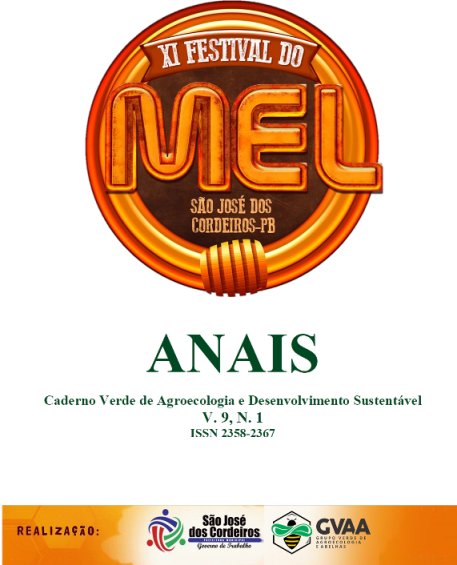EASY BEEKEEPING: QUEEN PRODUCTION BY THE SPANISH METHOD
Keywords:
Apis mellifera, Mass Selection, PracticalityAbstract
There are numerous methods of producing queens in modern beekeeping, one of which is the Spanish Method. This method differs from the others, as it is not necessary to build domes or capture larvae to perform grafting on queen production. Besides being very practical, the Spanish method can be used to multiply and select champion hives in a breeding procedure. This production system consists of preparing an orphaned queen starter hive with many nursing bees on the 4th to 8th day of life, with complete absence of eggs or larvae. Abundant food of energy (honey) and protein (pollen) is required. The beekeeper needs to make a handle, in the shape of a honeycomb, being 10 cm high, 49 cm long and 37 cm wide, which will be positioned above the nest, capable of holding a frame lying on the other frames. of the hive within 3 cm of the nest frames. This distance is of paramount importance since the royals will be built between the lying frame and the hive frames. Having made the basic preparation of the swarm, the hive and the handle, it is up to the beekeeper to select, by observing the characteristics and behavior of the bees (mass selection), a hive that will donate a picture containing the largest number of eggs and larvae with up to three days. With the choice of the frame, the beekeeper can still choose the best side of it with the best larvae. A small stick may be used to widen the chosen alveoli, indicating the bees to pull the racks. Once this is done, the enlarged alveoli should be positioned downwards. This introduced frame will be the only alternative for this hive to pull out royalty. The setting of the canals can be evaluated and inspected from the third day.Downloads
Published
How to Cite
Issue
Section
License
Termo de cessão de direitos autorias
Esta é uma revista de acesso livre, em que, utiliza o termo de cessão seguindo a lei nº 9.610/1998, que altera, atualiza e consolida a legislação sobre direitos autorais no Brasil.
O(s) autor(es) doravante designado(s) CEDENTE, por meio desta, publica a OBRA no Caderno Verde de Agroecologia e Desenvolvimento Sustentável, representada pelo Grupo Verde de Agroecologia e Abelhas (GVAA), estabelecida na Rua Vicente Alves da Silva, 101, Bairro Petrópolis, Cidade de Pombal, Paraíba, Brasil. Caixa Postal 54 CEP 58840-000 doravante designada CESSIONÁRIA, nas condições descritas a seguir:
O CEDENTE declara que é (são) autor(es) e titular(es) da propriedade dos direitos autorais da OBRA submetida.
O CEDENTE declara que a OBRA não infringe direitos autorais e/ou outros direitos de propriedade de terceiros, que a divulgação de imagens (caso as mesmas existam) foi autorizada e que assume integral responsabilidade moral e/ou patrimonial, pelo seu conteúdo, perante terceiros.
O CEDENTE mantêm os direitos autorais e concedem à revista o direito de divulgação da OBRA, com o trabalho simultaneamente licenciado sob a Licença Creative Commons do tipo atribuição CC-BY.
O CEDENTE têm autorização para distribuição não-exclusiva da versão do trabalho publicada nesta revista.
O CEDENTE têm permissão e são estimulados a publicar e distribuir seu trabalho online (ex.: em repositórios institucionais ou na sua página pessoal) a qualquer ponto antes ou durante o processo editorial, já que isso pode gerar alterações produtivas, bem como aumentar o impacto e a citação do trabalho publicado.








